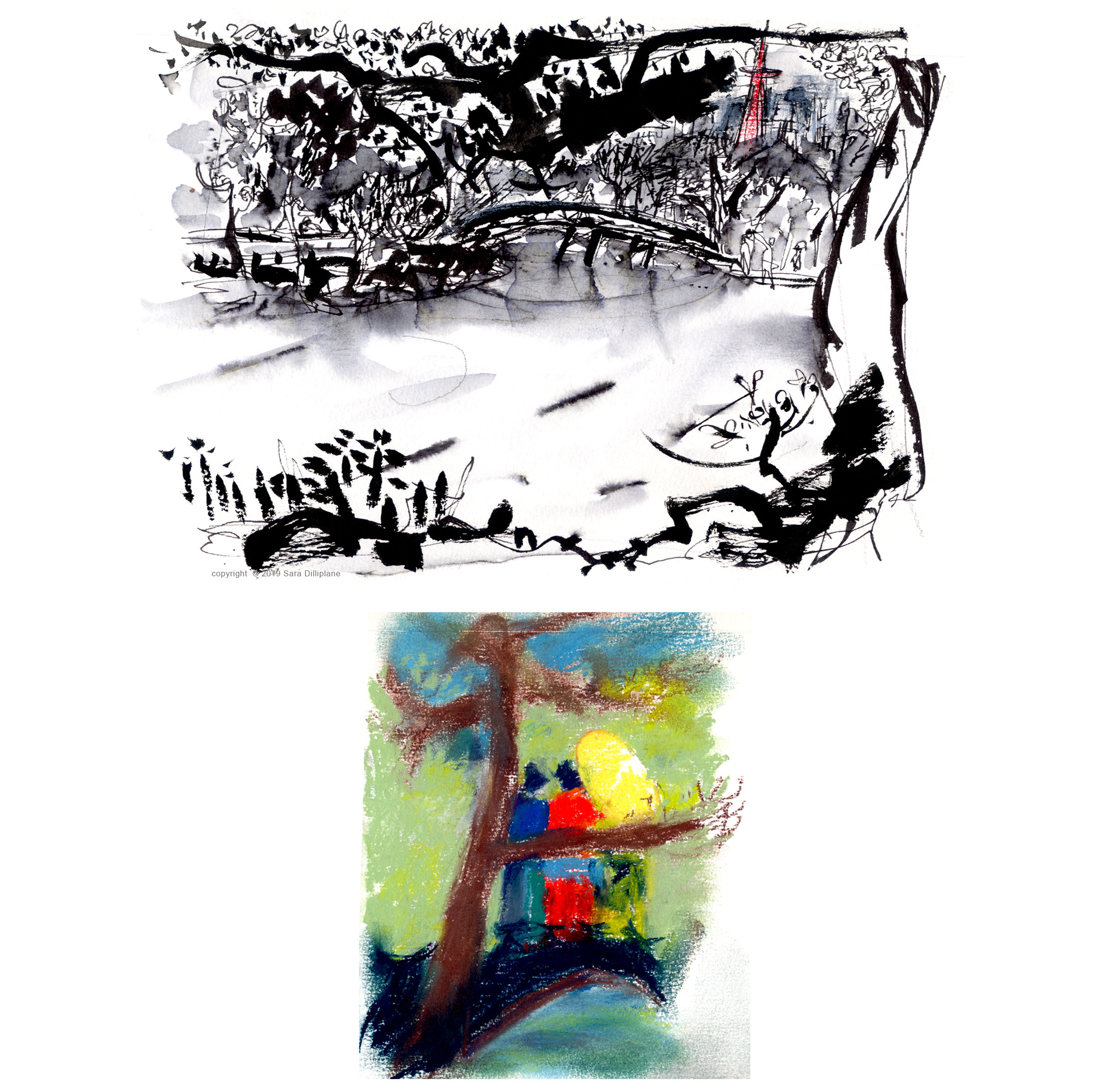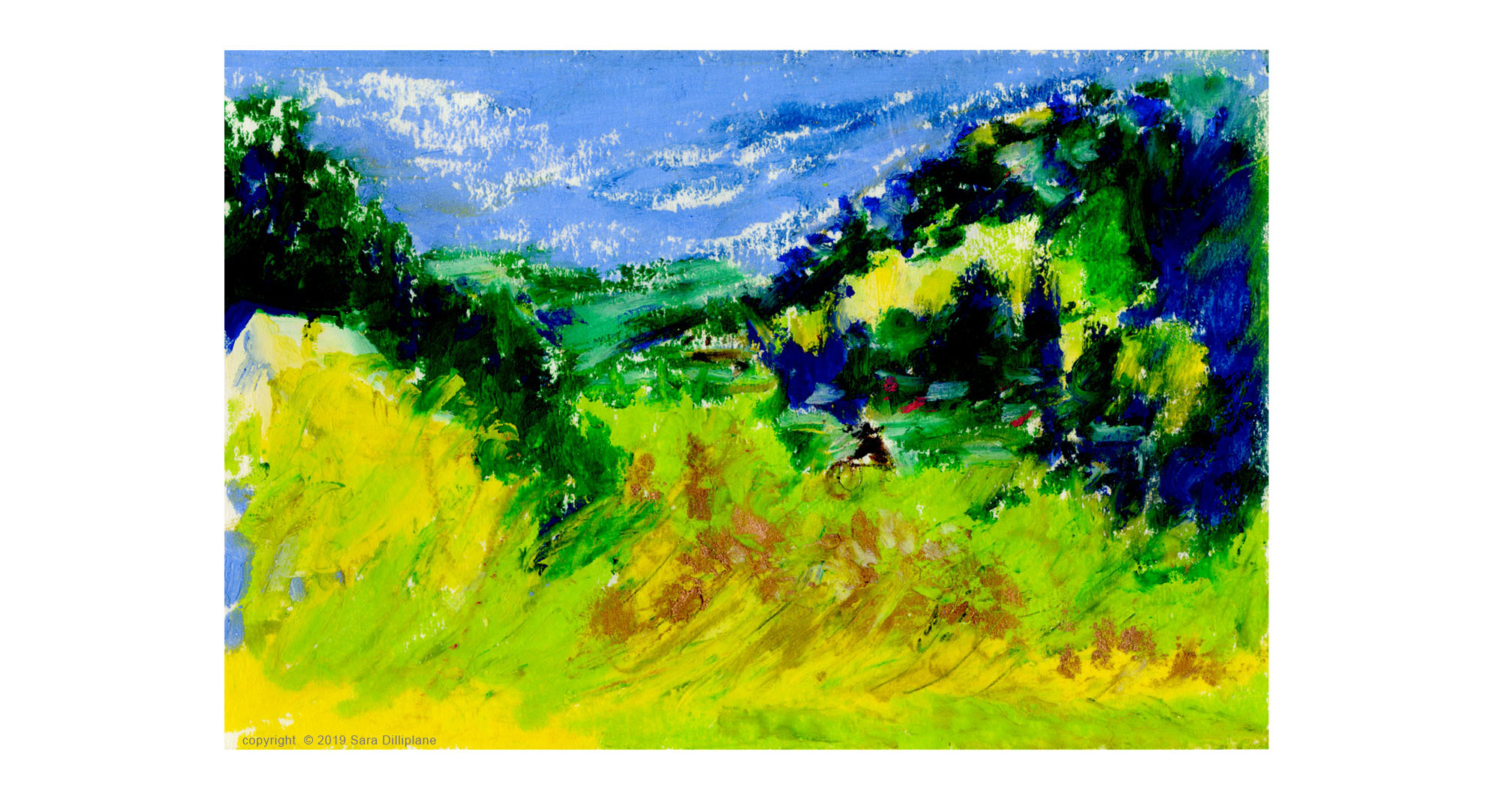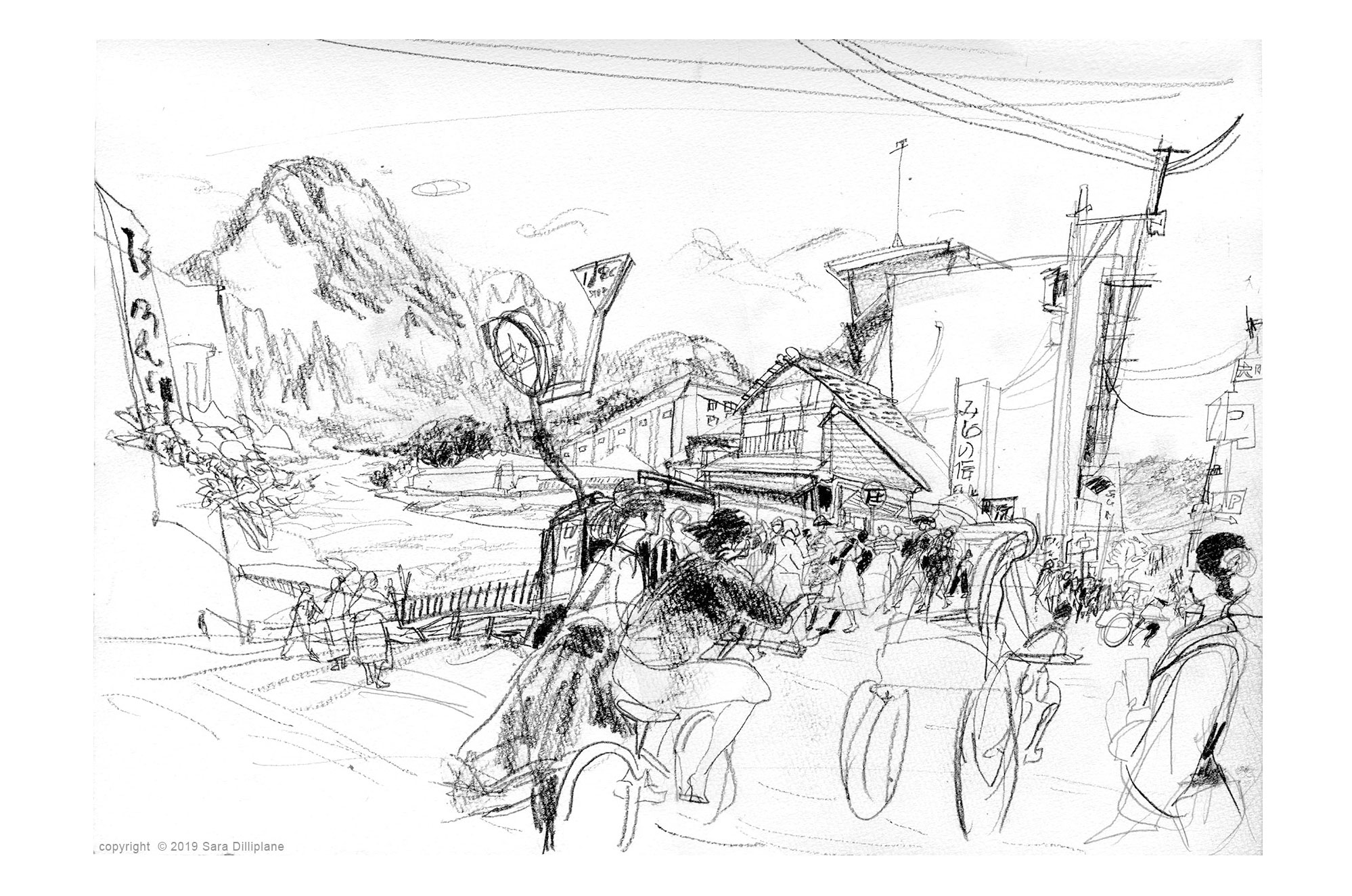I just returned from a trip to Japan, traveling with textile artist and educator, Mihoko Wakabayashi of the SAORI Worcester weaving studio, and several other fiber artists. I had a wonderful experience and my mind is still floating in memories of tea ceremonies, kimonos, and noodle shops! A big goal of the trip was to connect with Japanese weavers (see more here for the story behind this inventive, Zen-based type of weaving), and also to learn how SAORI is being utilized by studios for art therapy and economic empowerment for those with various disabilities in Japan. We made some amazing new friends and returned with many ideas for similar weaving applications here in the greater Boston communities.
In between the various workshops and meetings (and Japanese hot baths!), I had some time to draw and take in the culture, energy, and daily life of this beautiful country. Here are drawings from the first half of our trip (part 2 to follow soon)…
We started out in Osaka, visiting the SAORInomori studio in Izumi - a friendly, relaxed part of the city - and then took an easy train ride to Kyoto.
It’s easy to get lost in the romanticism of Kyoto, with block after block of ancient temples and traditional geishas walking strolling along. We stumbled upon the impressive Shinto Heian-jingu Shrine just as the sun was beginning to set. It was built in 1895 to commemorate the 1100th anniversary of Kyoto as capital of the country.
We also stopped by the serene Shosei garden where a group of ladies dressed in kimonos were having their picture taken on an iconic Japanese bridge. They were probably tourists, but it still made the quintessential picture of classic Japan!
I love seamlessly traditional and modern is blended in Kyoto. One minute it’s gritty, chaotic, modern,
the next, it’s a traditional open-air market like the Nikishi shopping district,
and then around the corner, it’s neon and trendy. All so fun to draw!
Since the train system is so convenient and manageable, I also took a few side trips outside the city. First I went to sacred Mount Kurama, just 40 minutes from Kyoto. People come here to hike a steep spiritual pilgrimage to the top, where Mikao Usui once meditated for 21 days and received the Reiki energy. There is still an active Buddhist temple at the top and the 6 pointed star in the center of the courtyard is a source of energy: stand here and receive the power of the universe (the 6 points of the star represent the ways we sense the world according to the Lotus Sutra: eyes, ears, nose, mouth, body, and heart).
Next I went to the IM Pei designed Miho Museum in the mountains of Shigaraki. Built to house Mihoko Koyama’s giant art collection, Pei wanted to evoke the ancient Chinese narrative, The Peach Blossom Spring, by Tao Yuanming, wherein a lost fisherman stumbles upon a self-sustaining utopia.
His design blends man-made materials with the natural landscape, leading you through a tunnel in the mountains, across a bridge, emerging into the “paradise” of the glass-roof museum.
As Pei sees it, art is the paradise between heaven and earth, a utopia of human creativity.
It was hard to leave Kyoto - it felt like we had only scratched the surface of all there is to see - but soon we were on a train heading south to Kyushu Island. We arrived in the small town of Yufuin, which has become more recently known to tourists for its hot springs, but still has a significant local population of farmers. It’s located within densely forested mountains and I felt like I had stepped right into an impressionist painting!
Farmers work tirelessly on their crops, and we arrived just as many were starting to plant miles of rice paddies. Many used modern farm machinery, but I saw a few working the mud with hand tools.
I hiked one day to the Ogosha Shrine where a giant 1000 year old Sugi tree is said to be inhabited by the Kami spirits. Cutting down trees can bring misfortune since they’re believed to often be the home of friendly spirits that watch over you. This tree was surrounded by a protective forest of bamboo that seemed to be dancing with the light and wind.
Back in the town center, streets hum on with tourists shopping, rick-shaw drivers jogging, people watching and walking, the Oita river chugging along.
Part 2 to be posted next week: our travels continued on to Hiroshima, Himeji, Okayama, and the “art island” of Naoshima!














